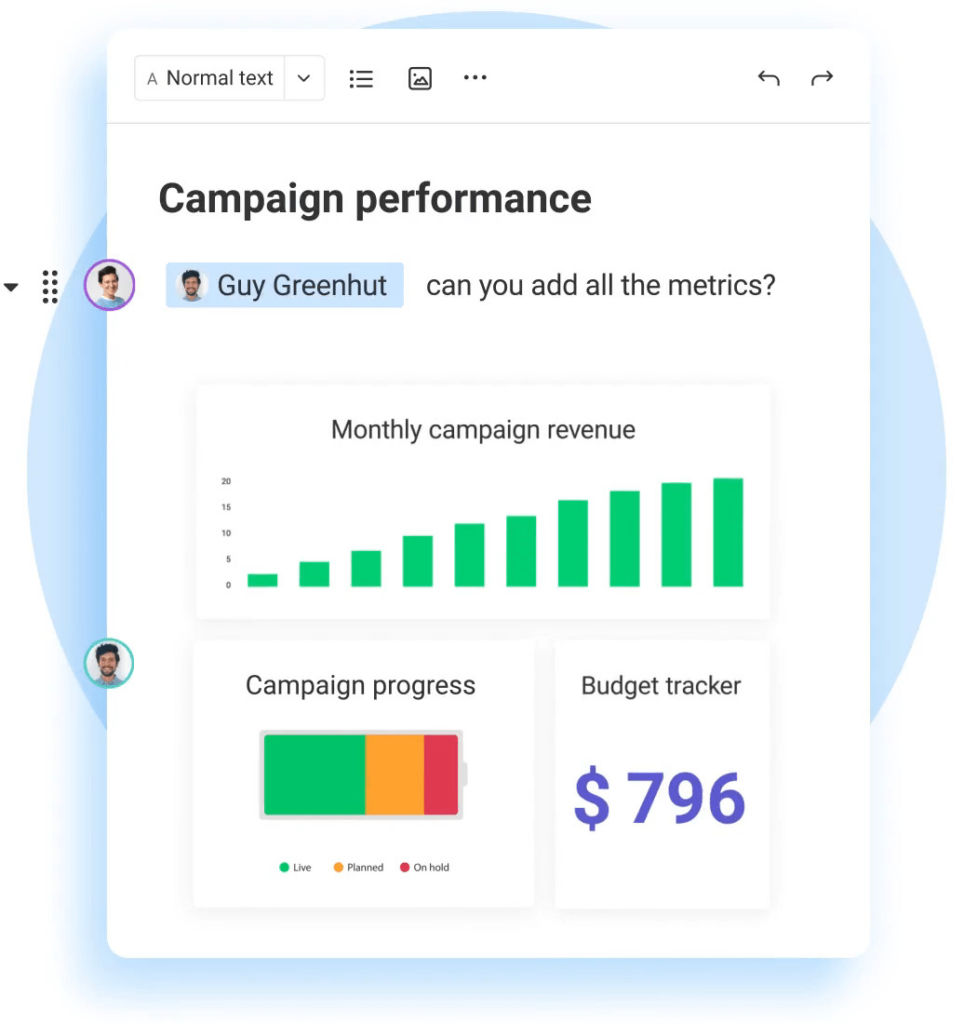How to ace project development
Blog: Monday Project Management Blog
Project management without project development is like cooking without a recipe.
If you know you want to make pasta and put the basic ingredients together in a timely fashion, you’ve a high chance of coming up with something good.
But if you want a specific or more complicated dish, it helps to know exactly what you’re doing before you start.
Project management gets things done. Project development determines what you’re trying to do.
If you’re trying to accomplish something that nobody’s ever done before, you have to pay attention to project development, not just management.
In this article, we’ll tell you exactly how to give project development the attention it deserves.
What is project development?
Project development is the practice of aligning resources and ideas so a project can reach its goals.
The term can be a little confusing since “development” is also often named as the second of the 5 stages of project management.
The development stage is when the project transforms from an idea into a full project plan. During that version of project development, the team defines the project’s scope, creates timelines, and sets a preliminary budget.
In this article, though, we’ll be examining a broader application of the term “project development.” Like project management, this kind of project development covers the entire project life cycle.
We’ve called the second project management stage “planning” in this article to minimize confusion.
The difference between project management and project development isn’t intuitive at first, but it makes sense the more you think about it.
“Resources” is a catch-all term for literally anything the project might need — from software to people, money, and a defined plan.
The more the team has to scrounge resources while the project is in motion, the less attention they can devote to the project itself.
Project developers also answer questions like who will work on the team, what they’ll need, and how the project can reach the place it sets out for.
Picture a board game. If project management is playing the game, project development is setting the pieces up ahead of time.
Project developers work to set the project up for success, while project managers guide it through the plan created by the developers. The project manager is a captain; the project developer is a shipbuilder and provisioner.
We could come up with metaphors all day, but we’re really just trying to get across one specific point: project development is a separate process from project management, with its own vital role to play.
But what does project development look like on the ground? And how can you ensure that you don’t set your project up to fail by skipping this crucial phase?
What are the 5 steps of project development?
Project development follows the 5 stages of any project: initiation, planning, execution, control, and closing.
1. Initiation
By the time a project is ready for project development, it usually has a few key things already in place.
First, there’s the business case. This exhaustively researched document proves that the project has the potential to turn a profit for the company.
There should also be user requirements. Members of your staff meet with customers from your proposed target market, as well as any stakeholders within your organization, and find out exactly what they would need to call this project a success.
From the business case and requirements, your team should develop a project plan. That’s a document that outlines the conditions for success, a timeline for getting there, a plan for communicating about the project, and what resources it requires.
The project plan is what really kicks off the project development process. To initiate project development, you’ll need to closely read the project plan and determine exactly what it’s asking.
Is its forecast about required resources accurate? If not, where are there misconceptions? If so, how easy or difficult will it be to get those resources in place?
You should also break down the workflows implied by the project timeline. Is there a clear owner for every step of the project? Do you know who’s going to do all this stuff?
This first phase becomes a lot easier if you draft your project plan as a monday.com workdoc.

monday.com workdocs are designed for collaboration. Beyond just text and comments, you can add linked elements into the document, the perfect feature for examining where resources are coming from.
For example, if you’re trying to figure out how a project’s costs will impact the overall budget, you can directly connect your master budget dashboard to the project plan.
Once you know exactly what the project plan demands if it’s going to succeed, you’re ready for the next phase: making a plan of your own.
2. Planning
In this stage, come up with a plan that allocates all necessary resources to the project.
This is a foundational step for the rest of the project development process. Remember, it’s all about ensuring the project team has everything they need to succeed.
It’s almost impossible to get too detailed at this stage. You’re trying to eliminate all possible questions about how the project plan will shake out.
Naturally, there’ll be obstacles you can’t predict. It’s impossible to create a perfect backup plan. But if something unexpected happens, don’t let it be for lack of trying.
It’s a tall order, but having the right software can help. Enter the monday.com workload and resource management app.
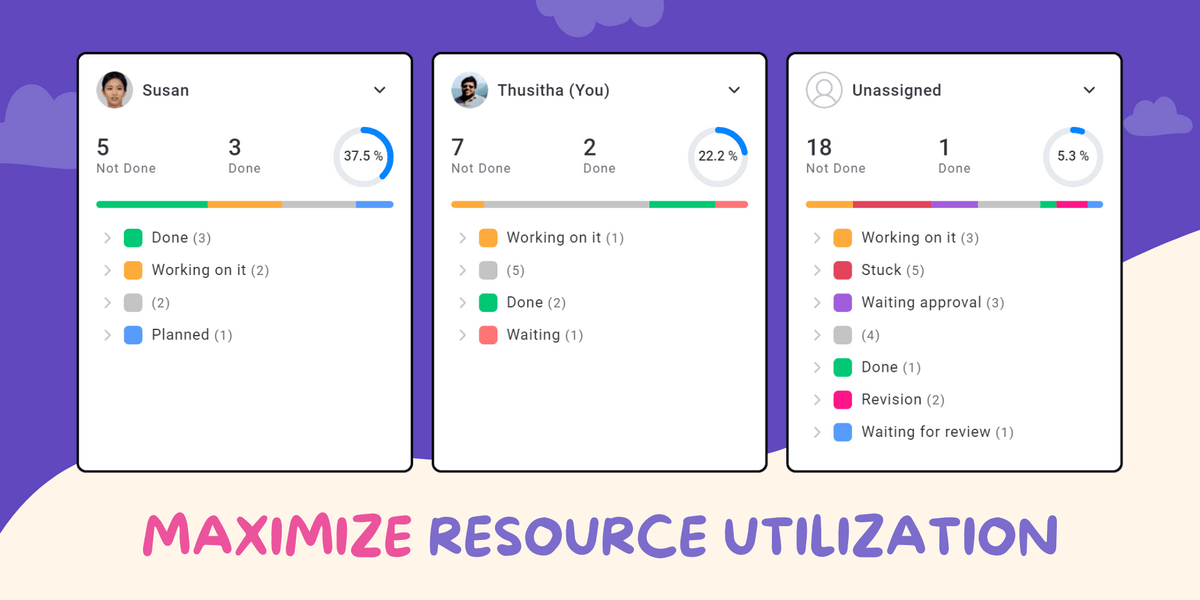
This app was developed by a third party using our low code apps framework. It’s designed to cover team members but can be customized for any type of limited resource.
The app gives you a complete view of how much pressure is currently on each resource and how much more there is to go around.
To create a project development plan at the ideal level of detail, your best bet is to automate a constant flow of information using apps like this one.
3. Execution
When the project is ready to begin, project management moves into a leading role. If there are any staff members focusing mainly on project development, they’ll move into a monitoring position.
The project development plan should make sure that the project has all the resources it needs throughout its lifecycle, not just right at the start.
As we said, though, you can’t forecast everything that might go wrong. If you could, we wouldn’t call it “the unexpected.”
But that doesn’t mean there’s nothing you can do. Like before, the secret ingredient is information.
The sooner the project development staff becomes aware that something isn’t going according to plan, the sooner they can push it back onto the right path — or adapt to new outside circumstances.
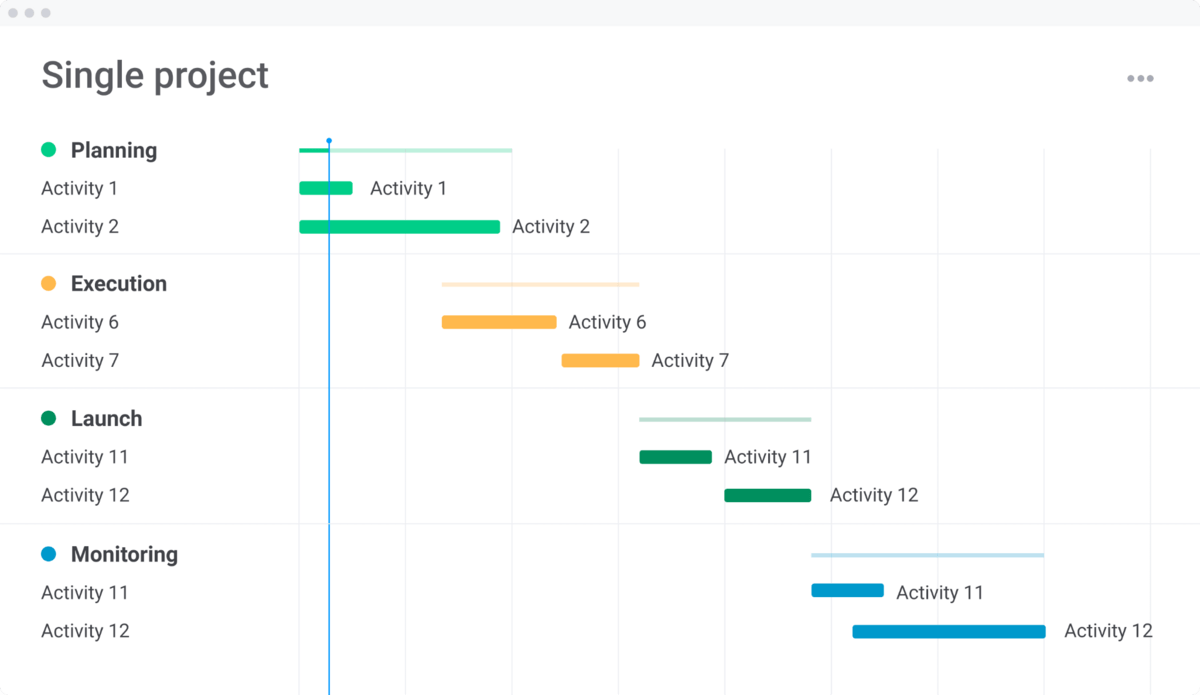
The monday.com single project template is designed to help with that.
It features linked timelines, status data tables, and other views to help you make sense of the project from every angle. If any part of the project isn’t set up for success, you’ll be able to see right away.
Like the overall project plan, the project development plan should be a living thing. For example, you might see delays because a resource you were counting on needed to be diverted to another team.
That’s why project development doesn’t end when the project starts. It’s a constant, ongoing process.
4. Control
The control phase of project development is also called the quality assurance phase. It’s a fitting name — you’re essentially conducting a code review for your project development plan.
Control can happen after the project ships or at regular intervals in the timeline. It’s a chance to look back on what worked, what didn’t, and what lessons you can carry into the future.
As with all 5 steps, your success here will be determined by how much detail you’re able to go into. You’re going to ask questions that get to the heart of how you perform as a team.
These can be questions like:
- Were there any areas where resources went to waste?
- If the project came in behind schedule, what factors led to the delay?
- If the project went over budget, why weren’t your initial projections accurate?
- How accurate was your risk forecasting? When risks appeared, how did you deal with them?
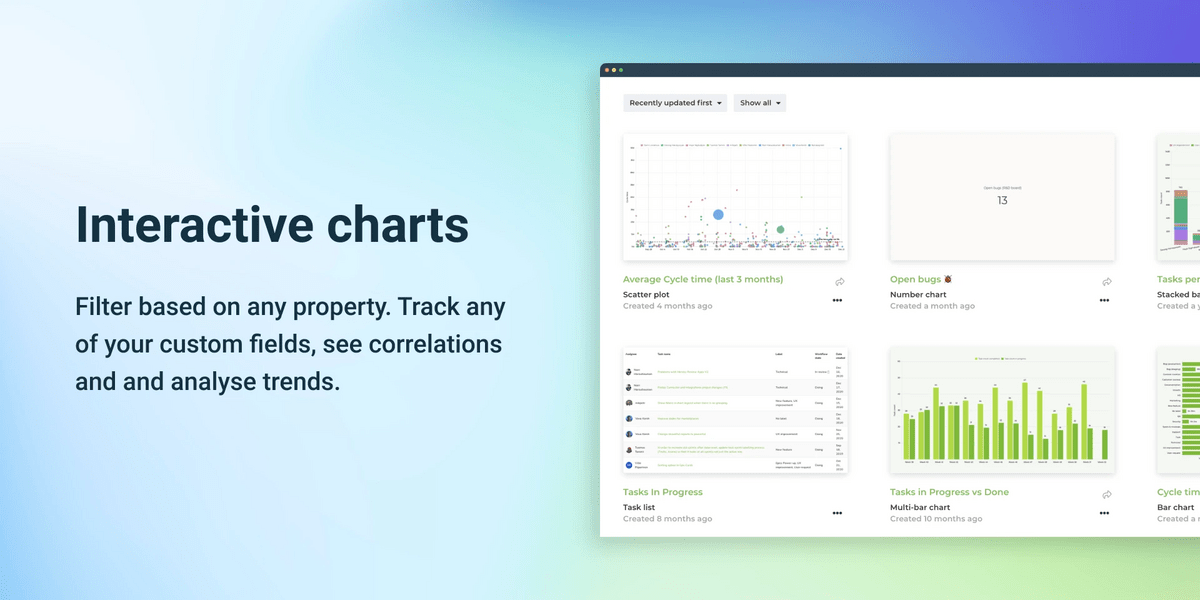
With a little customization, the monday.com analytics and reports app can help you answer any and all of those questions.
Link it to your project plan dashboard at the start of the timeline, and you’ll be able to see at a glance which milestones caused you the most headache.
You’ll also be able to pick out any positive or negative trends, look for areas where you can trim waste, or see how unexpected risks impacted the bottom line.
5. Closing
Once you’ve gathered insights from the project, there’s one more thing to do. This step usually happens parallel to the customer-facing product launch.
Collect the insights into a report that you can share with every stakeholder. Your goal is to make it part of the institutional knowledge of your organization.
Project development is like a wheel. Sure, it’s always going in a circle — the same 5 steps repeat for every project — but it’s also always moving forward.
Each project development cycle should position you closer to success in the future.
And yes, monday.com has an app for that.
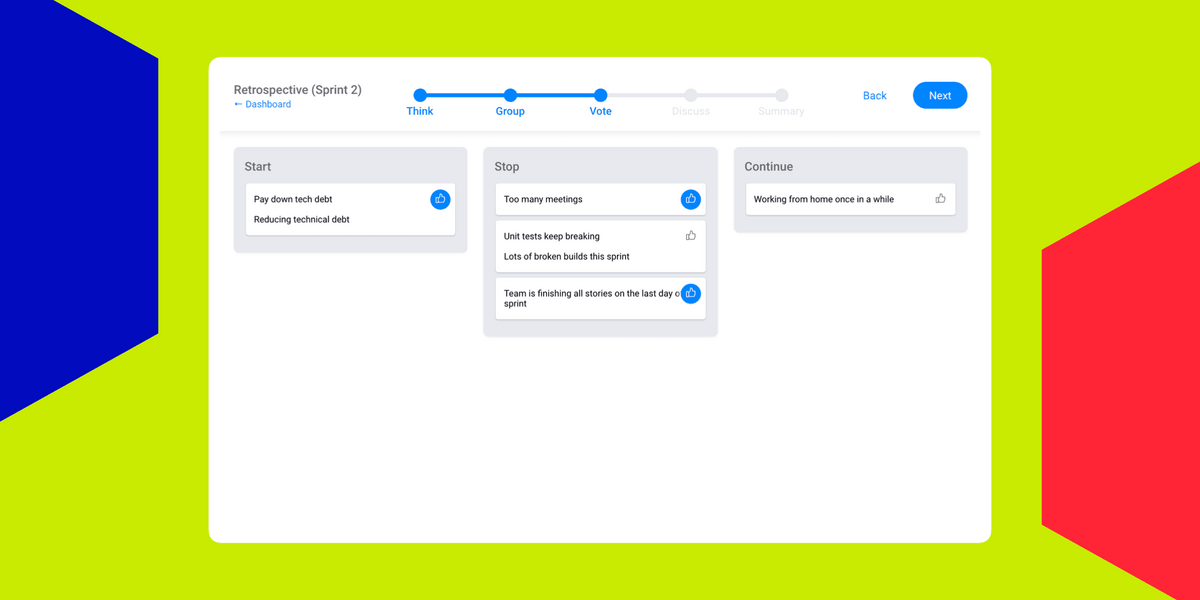
Appgami Retrospectives, developed by a third party through our app framework, is a tool for creating shareable retrospectives. It’s ideal for teams working remotely during the closing phase.
You can build your retrospective from a template or start from scratch. When you’re finished, it’s easy to share with your entire staff.
Other features help with timeboxing and group collaboration, ensuring that the final document will be a productive representation of everyone’s viewpoint.
Resources like these retrospectives help you avoid ever making the same mistake twice.
What are some obstacles in project development?
One of the main goals of project development is intercepting problems before they arise.
As such, project development staff members often serve as a project’s “commandos.” They’re deployed to the front line, where they’ll be the first to encounter any problems.
Here are just a few of the obstacles they might run into.
- Scope creep: when a project’s scope isn’t properly defined, it can gradually grow so large that success becomes impossible. Project development can fight scope creep by clearly defining a scope that matches predicted resource availability.
- Resource restrictions: at times, one or more resources may become unexpectedly limited, either because of external conditions or movements elsewhere in the company. Your project development plan should account for potential availability problems.
- Poor communication: no amount of planning will save you from bad communication. People can’t follow your plans if they don’t know what they are. Your project development plan has to involve schema for how stakeholders will communicate.
- Unrealistic timelines: time is a resource. Like any resource, the project development plan should keep it as available as possible. Learn to balance meeting your goals with avoiding crunches that might harm your employees or product.
- Risk management failures: forecasting and analyzing risks is only half the battle. You also need a plan to mitigate each risk you might face. Will you absorb the risk, transfer it to another entity, or find a way to avoid it?
You might have noticed by now that project development can run into obstacles in a lot of different areas. It’s not realistic to expect a single app to cover them all.
But monday.com still offers you the tools to track every possible project development issue — not in one app, but in a whole Work OS.
“Work OS” means that you knit several dashboards together into a complete workflow that covers all your bases.
You might be using one database for your timeline, another for your budget, and a third for risk management. monday.com lets you integrate them all, so changes in one automatically update relevant fields in the others.
Some project development leaders even choose to build a single super-dashboard that reports on all the other ones. You can do it any way that works for you and your team.
What are some project development examples?
Project development, as distinct from project management, is a concept that takes some getting used to. To help clarify, we wanted to share some stories of what it looks like when it works.
Playtech, an online gaming supplier based in Estonia, fell behind as it tried to tackle a high volume of client requests.
The team realized that their missing piece was project development. They’d get bogged down in the middle of the project cycle when key resources didn’t materialize.
Using monday.com, they established preliminary project development as a central part of their process. They start by closely defining each project’s scope. Then they use that scope to determine what resources they’ll require before work begins.
You can see a partially redacted sample of their Work OS below.
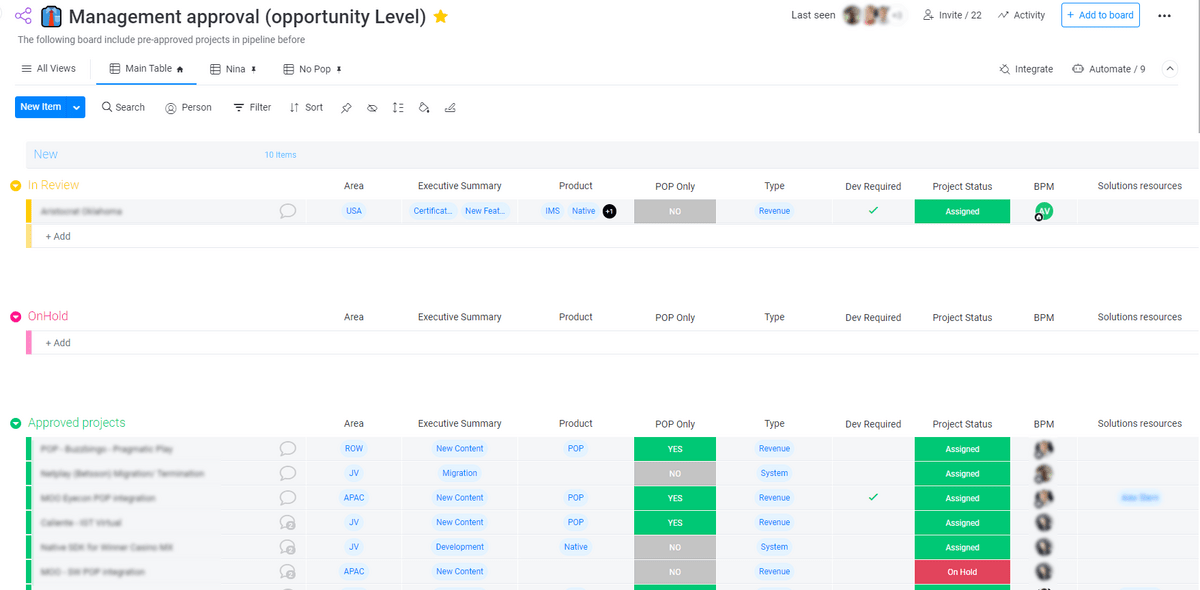
Project development isn’t just for technical teams.
The marketing team at Genpact, a professional services firm that caters to the Global Fortune 500, found their productivity starting to drop.
They identified the problem — there was no central source of truth for how to run their campaigns. Running over 20 simultaneous projects with intersecting teams and goals was leading to waste.
Genpact found monday.com ideal for its global team. They used it to build efficient timelines that kept their campaigns from coming into conflict.
You can see some of their work below.
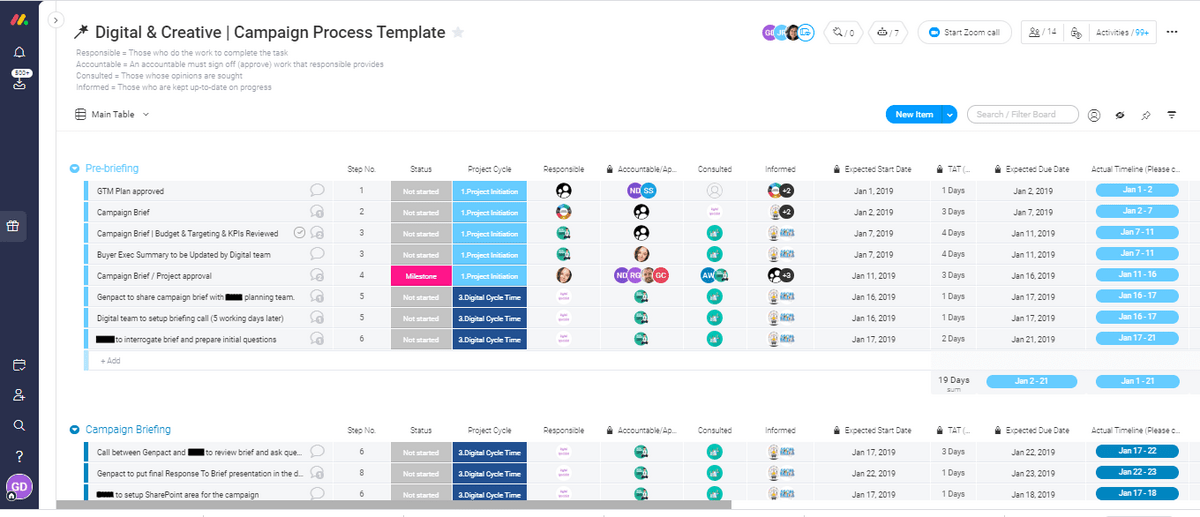
Chart your success with project development
Near the beginning of this article, we illustrated the difference between project management and project development with a metaphor about captains and shipbuilders.
That reminds us of an old saying: “if you don’t have a destination, there’s no such thing as a favorable wind.”
Project development helps you chart a course for success. Once you know where you’re going, you can get there in style.
monday.com makes project development easy, fun, and rewarding. Schedule a demo today.
The post How to ace project development appeared first on monday.com Blog.
Leave a Comment
You must be logged in to post a comment.
